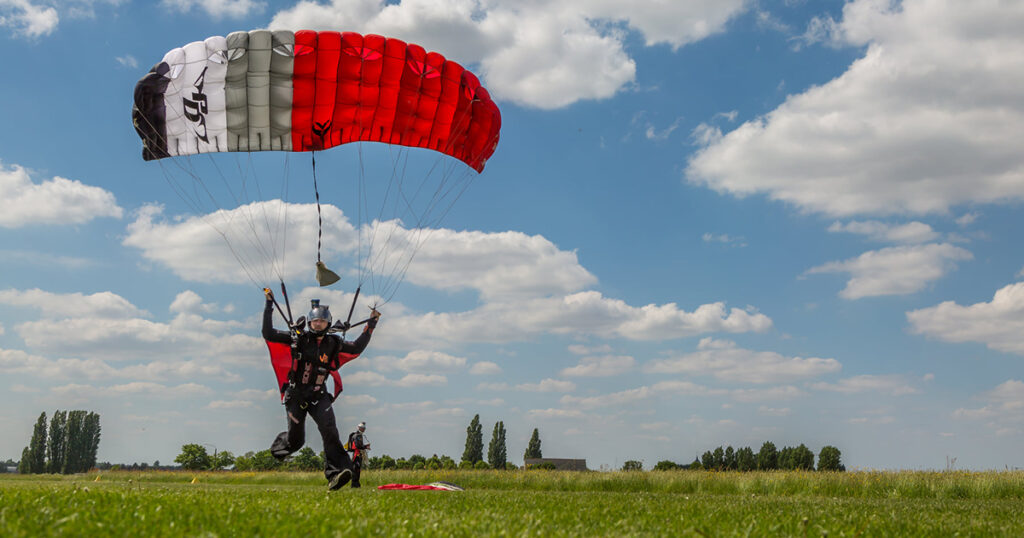Sven Ibens boils all the blocks down to the same simple principles…

There are 22 different blocks in the IPC 4-way dive pool. A lot of people think that each block requires a specific technique and a different approach. Of course, the formations look different and the grips that we take vary from block to block. However, the techniques used to turn the blocks are generally the same and the same principles apply.
Good set-up
Every block begins with a good set-up. The goal is to build the top of the block so that it looks the way we expect it to look. That is why we brief our jumps. The ideal jump is the jump where everything goes as we planned it on the creepers. Working towards a good set-up requires a complete overview of the formation; not only knowing which grips you have to take, but also understanding where your teammates should be and what grips they should be picking up. Use the time on the creepers also to discover this aspect.

Communication
Good communication is very important on the ground, and also during the skydive. During briefings, talk to your team about how a briefing feels for you, and what issues you expect to occur during the jump. This will encourage the others to think about the jump as a whole and together you will most likely find solutions to any difficulty.
During the skydive, it is even more important to communicate. We can communicate by making eye contact, gestures (eg, bringing your head back in after you have picked up a grip) and body language in general.
Communication will allow us to start our block move in a synchronised way. Synchronisation is key when turning a block. Eye contact will be used to key the top of the block and to determine whether or not your teammate is ready to start.

Staging
Only one person should be flying at a time. All blocks can be split up in different stages. Generally a block consists of two or three different parts. During each part, only one member of a subgroup will fly and execute a move. His (or her) piece partner will remain in place, making it easier to control the block move. It is easier for a subgroup if one person flies at a time, rather than trying to fly together. Again, it is very important that you understand where your piece partner needs to go during the move so that you can guide him/her.
Flying straight lines
The goal is to fly as much as possible in straight lines and to avoid turning around each other within a subgroup. This is most efficient. Flying in straight lines will allow you to limit the distances between the centrepoints of the subgroups. It will also help you to open the door for your piece partner and create a space that he/she can use to execute his/her move.
Patience
When your piece partner is flying, you will have to be patient and concentrate on keeping your individual centrepoint in place, allowing your piece partner to fly where he or she wants to. It is very tempting to start flying yourself and you will have the feeling that you are wasting valuable time. The reality is that if you wait, you will create time and overview for yourself and your team, which will allow you to fly the block move more effectively. This will result in faster block times.
When your piece partner is flying, you will have to be patient and concentrate on keeping your individual centerpoint in place

Small moves – big stops
Most people try to do too much, wasting energy and time. The aim is to do as little as possible. Economic flying is key. When briefing a skydive, look at your engineering from a distance and try to limit your moves. Stopping your moves is probably what we hear most when asking an experienced skydiver or coach for advice. Not stopping is possibly the most common mistake in skydiving. Including stops in your block move will allow you to stage the block and to keep everything overseeable for all team members.
See the pictures
Stops are also important to see predetermined halfway or interim pictures. Identifying these will help us to make sure that our block turns the way we briefed it, and to keep the synchronisation between the subgroups. It also tells us what remedial action to take to finish the block, if the halfway picture was not what we expected to see, and how to fix our move on the next page.

Further reading:

